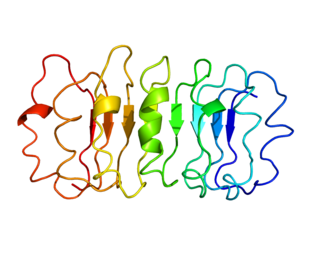A hormone receptor is a receptor molecule that binds to a specific hormone. Hormone receptors are a wide family of proteins made up of receptors for thyroid and steroid hormones, retinoids and Vitamin D, and a variety of other receptors for various ligands, such as fatty acids and prostaglandins. Hormone receptors are of mainly two classes. Receptors for peptide hormones tend to be cell surface receptors built into the plasma membrane of cells and are thus referred to as trans membrane receptors. An example of this is Actrapid. Receptors for steroid hormones are usually found within the protoplasm and are referred to as intracellular or nuclear receptors, such as testosterone. Upon hormone binding, the receptor can initiate multiple signaling pathways, which ultimately leads to changes in the behavior of the target cells.
Steroid hormone receptors are found in the nucleus, cytosol, and also on the plasma membrane of target cells. They are generally intracellular receptors and initiate signal transduction for steroid hormones which lead to changes in gene expression over a time period of hours to days. The best studied steroid hormone receptors are members of the nuclear receptor subfamily 3 (NR3) that include receptors for estrogen and 3-ketosteroids. In addition to nuclear receptors, several G protein-coupled receptors and ion channels act as cell surface receptors for certain steroid hormones.

The thyrotropin receptor is a receptor that responds to thyroid-stimulating hormone and stimulates the production of thyroxine (T4) and triiodothyronine (T3). The TSH receptor is a member of the G protein-coupled receptor superfamily of integral membrane proteins and is coupled to the Gs protein.

The RETproto-oncogene encodes a receptor tyrosine kinase for members of the glial cell line-derived neurotrophic factor (GDNF) family of extracellular signalling molecules. RET loss of function mutations are associated with the development of Hirschsprung's disease, while gain of function mutations are associated with the development of various types of human cancer, including medullary thyroid carcinoma, multiple endocrine neoplasias type 2A and 2B, pheochromocytoma and parathyroid hyperplasia.

The small heterodimer partner (SHP) also known as NR0B2 is a protein that in humans is encoded by the NR0B2 gene. SHP is a member of the nuclear receptor family of intracellular transcription factors. SHP is unusual for a nuclear receptor in that it lacks a DNA binding domain. Therefore, it is technically neither a transcription factor nor nuclear receptor but nevertheless it is still classified as such due to relatively high sequence homology with other nuclear receptor family members.

Rev-Erb alpha (Rev-Erbɑ), also known as nuclear receptor subfamily 1 group D member 1 (NR1D1), is one of two Rev-Erb proteins in the nuclear receptor (NR) family of intracellular transcription factors. In humans, REV-ERBɑ is encoded by the NR1D1 gene, which is highly conserved across animal species.

The KiSS1-derived peptide receptor is a G protein-coupled receptor which binds the peptide hormone kisspeptin (metastin). Kisspeptin is encoded by the metastasis suppressor gene KISS1, which is expressed in a variety of endocrine and gonadal tissues. Activation of the kisspeptin receptor is linked to the phospholipase C and inositol trisphosphate second messenger cascades inside the cell.

Retinoic acid receptor alpha (RAR-α), also known as NR1B1 is a nuclear receptor that in humans is encoded by the RARA gene.

Proteinase-activated receptor 1 (PAR1) also known as protease-activated receptor 1 or coagulation factor II (thrombin) receptor is a protein that in humans is encoded by the F2R gene. PAR1 is a G protein-coupled receptor and one of four protease-activated receptors involved in the regulation of thrombotic response. Highly expressed in platelets and endothelial cells, PAR1 plays a key role in mediating the interplay between coagulation and inflammation, which is important in the pathogenesis of inflammatory and fibrotic lung diseases. It is also involved both in disruption and maintenance of endothelial barrier integrity, through interaction with either thrombin or activated protein C, respectively.

Thyroid hormone receptor alpha (TR-alpha) also known as nuclear receptor subfamily 1, group A, member 1 (NR1A1), is a nuclear receptor protein that in humans is encoded by the THRA gene.

Lysophosphatidic acid receptor 2 also known as LPA2 is a protein that in humans is encoded by the LPAR2 gene. LPA2 is a G protein-coupled receptor that binds the lipid signaling molecule lysophosphatidic acid (LPA).

Melanin-concentrating hormone receptor 2 (MCH2) also known as G-protein coupled receptor 145 (GPR145) is a protein that in humans is encoded by the MCHR2 gene.

Relaxin/insulin-like family peptide receptor 2, also known as RXFP2, is a human G-protein coupled receptor.

Lysophosphatidic acid receptor 3 also known as LPA3 is a protein that in humans is encoded by the LPAR3 gene. LPA3 is a G protein-coupled receptor that binds the lipid signaling molecule lysophosphatidic acid (LPA).

T1R2 - Taste receptor type 1 member 2 is a protein that in humans is encoded by the TAS1R2 gene.

Leucine-rich repeat-containing G-protein coupled receptor 6 is a protein that in humans is encoded by the LGR6 gene. Along with the other G-protein coupled receptors LGR4 and LGR5, LGR6 is a Wnt signaling pathway mediator. LGR6 also acts as an epithelial stem cell marker in squamous cell carcinoma in mice in vivo.

60S ribosomal protein L7a is a protein that in humans is encoded by the RPL7A gene.

Thyroid receptor-interacting protein 6 is a protein that in humans is encoded by the TRIP6 gene.

Thyroid hormone receptor-associated protein 3 is a protein that in humans is encoded by the THRAP3 gene.

Sodium/bile acid cotransporter also known as the Na+-taurocholate cotransporting polypeptide (NTCP) or liver bile acid transporter (LBAT) is a protein that in humans is encoded by the SLC10A1 (solute carrier family 10 member 1) gene.


















